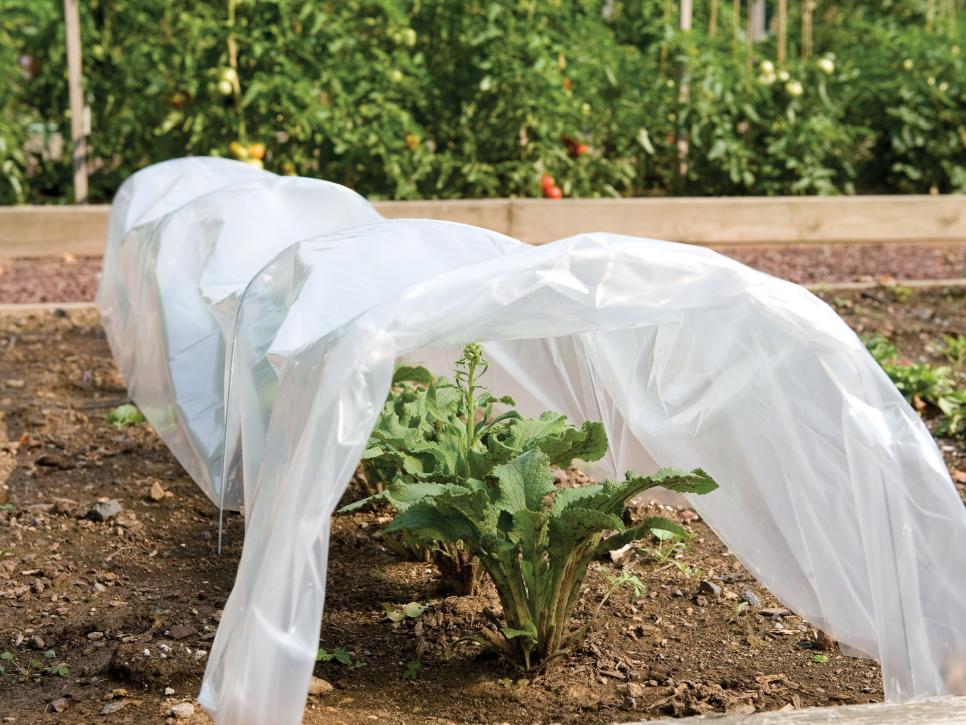GARDEN WORKS: Wrapping up for winter

 by Emily Cates
by Emily Cates
Are we ready for Old Man Winter? We should be, since Mother Nature seems to be making up her mind that she’s here!
Many opportunities in the garden like digging and planting are lost when the ground freezes. The good news, though, is there may be a little time left for winterizing our garden and orchard now. The effort expended will reward us next year with fewer frustrations and heartaches, and much more satisfaction with our hard work. A case in point is all those wonderful fruit trees we invested our time and money in. At twenty-five bucks a pop, a tree will potentially pay for itself many times over — that is, if it thrives and survives long enough to make it worth our while. Chances are if a young tree successfully makes it through the winter, then it will be more likely to do well in the future. That’s why winter care is so vital and should not be overlooked, especially in beginning of the season and early on in a tree’s lifespan. The following are suggestions with trees in mind — though they should work well with vines (such as grapes), cane fruits, and shrubs.
The challenges for trees in the wintertime are unique. An important thing to keep in mind is that the snow can both help and hurt a tree. It helps in that it acts as a protective blanket that holds in warmth, thus enabling a tree to be fully hardy in northern areas. However, this blanket will also house unwelcome guests such as rodents who chew the bark and damage the tree. Foil the rascals with tin foil- simply make a collar and wrap the tree trunk at the base and up a foot or two. Or use hardware cloth, window screening, or a tree guard from a garden store. Remember to regularly check the collar and allow room for the growing trunk, keeping an eye out for girdling and abrasion if rigid materials are used.
Winter sun might brighten our day, but it can reflect on the snow pack and harm the trunk of a tree. Trees in the woods seem to have less of this problem since the light is more diffused, but it can be a bigger issue in an orchard planting. Sunscald can be remedied by a coat of interior latex paint mixed with joint compound and painted onto the trunk. (This, incidentally, also makes it easier to spot borer damage on pear and apple trees.) The FEDCO Trees catalog has a great recipe for an organic option using quick lime, milk, and linseed oil. Tin foil may once again come to the rescue for this problem; it’s also good for minimizing the danger of being smooshed by the snow plow. I can’t tell you how many times I’ve heard of an unfortunate tree or shrub meeting its end this way — so let’s be sure to clearly mark our beloved trees and keep them safe!
A good layer of mulch around trees to their drip edge can be applied or renewed at this time. Mulching will help conserve moisture and nutrients, moderate soil temperatures, encourage earthworms, and keep weeds in check. Bark mulch, pebbles, old sawdust, shredded leaves, untreated cardboard, newspaper, rotted manure, and compost are preferable to hay, which encourages rodents. Be sure to pull the mulch a few inches away from the trunk. If possible, try to delay pruning until late winter, unless removing dead or diseased parts of the tree (unless you have a tree or shrub that has specific pruning needs for this time). Pruning encourages growth, which is not what we want right now. New growth is especially tender and susceptible to winterkill. So hold off on most pruning and fertilizers, and put the trees to bed instead.
And let’s face it. It is rare to have 100 percent success in the garden. So let’s take stock and walk our plot, and examine each and every tree, shrub, vine, or specimen. It may be a good idea to make the tough decisions now. Is there a tree that looks sickly, a vine out of place, or a shrub which under-whelmed our expectations? Maybe it’s time to take action and make room for something else that will be worth it. Late autumn is an ideal time for this, since the vacancy may be prepared now for planting with fresh ideas in springtime.
And while we’re outside, let’s enjoy the wonderfully crisp air, welcoming Old Man Winter to our gardens!
Responsible journalism is hard work!
It is also expensive!
If you enjoy reading The Town Line and the good news we bring you each week, would you consider a donation to help us continue the work we’re doing?
The Town Line is a 501(c)(3) nonprofit private foundation, and all donations are tax deductible under the Internal Revenue Service code.
To help, please visit our online donation page or mail a check payable to The Town Line, PO Box 89, South China, ME 04358. Your contribution is appreciated!


Leave a Reply
Want to join the discussion?Feel free to contribute!